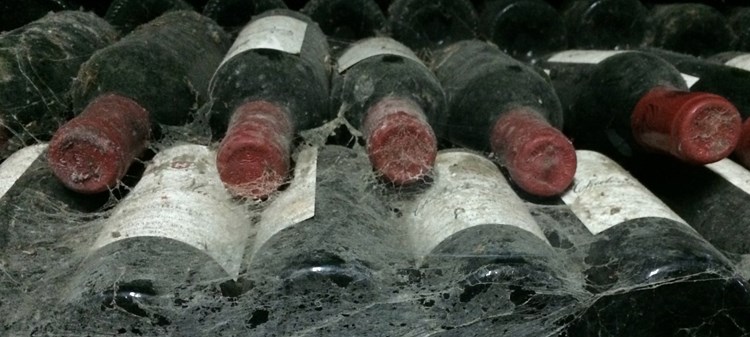
Which site would you like to visit?
By clicking the retail or wholesale site button and/or using rarewineco.com you are choosing to accept our use of cookies to provide you the best possible web experience.
“Reminds me very strongly of what the beautiful 1978 and 1979 drank like back in the late ‘80s and early ‘90s ... a classic Musar! 94+ rating.”
John Gilman on the 2001
“Really lovely wine. Fresh, sweet with some very slight mintiness ... 18.5/20 rating.”
Jancis Robinson on the 1998
“Broad and rich with a minty note ... already gorgeous ... 18.5/20 rating.”
Jancis Robinson on the 1999

Musar is, as John Gilman once wrote, “one of the world’s most iconic and inspiring wines.” And not only does Musar have an extraordinary pedigree, older vintages can make you think you're drinking a mature bottle from a Northern Rhône traditionalist.
Despite a long and rich history in Lebanon’s Bekaa Valley, it was not until 1979 that Musar became known to the outside world. For that, we can thank the UK’s Michael Broadbent’s excitement over tasting a bottle of 1967.
I was introduced to Musar just a few years later, in the mid-1980s, when the then-US importer hosted a retrospective in New York back to 1959. That tasting changed my life, just as the 1967 had changed Broadbent’s.
The origins of Musar as we know it date back to 1930, when Gaston Hochar returned from a visit to Bordeaux. He was determined to create a great wine estate in the Bekaa, rekindling a winegrowing legacy dating back 6,000 years.
Naturally, he began with Cabernet Sauvignon as his primary red variety. But by the 1960s, his son Serge (trained by Émile Peynaud) took Musar in a different direction, adding Cinsault and Carignan to the blend. This change contributed the spice and earth that makes some mature vintages of Musar much more reminiscent of the Northern Rhône and Provence than of Bordeaux.
The winemaking is remarkably classic. The grapes are fermented and macerated for six months in concrete tank, followed by one year’s aging in French oak barrels. The wine then harmonizes for another year in concrete before bottling. Finally, the wine is allowed to rest in bottle in Musar’s cold stone cellars until deemed ready for release.
Through this approach Ch. Musar had, by the 1970s, achieved a level of character and quality equal to the world’s most iconic wines, a feat made all the more remarkable by Lebanon’s ongoing Civil War. And since Serge’s tragic death in 2014, his son Gaston has assured that Musar remains one of the world’s most distinctive wines.
While young vintages of Musar can be superb, great vintages hit another gear when mature, achieving a richness on the palate and an aromatic complexity that truly satisfies the soul.
Tasting Notes:
1998 Ch. Musar
Jancis Robinson: “18.5/20 rating ... Light, spicy, particularly well-integrated nose. Already well developed. Sweet start and very nicely mature. Seems just right now. The opposite of heavy. Lifted, jewel-bright. Really lovely wine. Fresh, sweet with some very slight mintiness. Dry finish and it would go beautifully with food. Very long. One of my favourite wines in this collection.”
1999 Ch. Musar
Jancis Robinson: “18.5/20 rating ... An exceptional year ... Broad and rich with a minty note ... Still evolving but beautifully balanced. Lots of energy and transparency. No heaviness at all. Rich but lifted. Already gorgeous but there are tannins behind the exotic fruit and brilliant freshness. Still quite youthful. (Drink between 2016-2036)”
2001 Ch. Musar
John Gilman, View from the Cellar: “94+ rating ... has now reached a lovely point in its evolution for current drinking, as it delivers a fine bouquet of raspberries, cherries, spices meats, a fine base of stony soil tones, cigar wrapper, a bit of pepper, garrigue and a touch of cedar. On the palate the wine is pure, full-bodied, complex and shows beautiful mid-palate depth, with impeccable balance, fine focus and grip, melting tannins and outstanding complexity on the long and utterly classic finish. I drank a fair bit of Château Musar from the decade of the 1970s in my formative years in the wine trade, and this 2001 reminds me very strongly of what the beautiful 1978 and 1979 drank like back in the late ‘80s and early ‘90s. This is a classic Musar!”
New discoveries, rare bottles of extraordinary provenance, limited time offers delivered to your inbox weekly. Be the first to know.
Please Wait
Adding to Cart.
...Loading...


By clicking the retail or wholesale site button and/or using rarewineco.com you are choosing to accept our use of cookies to provide you the best possible web experience.

